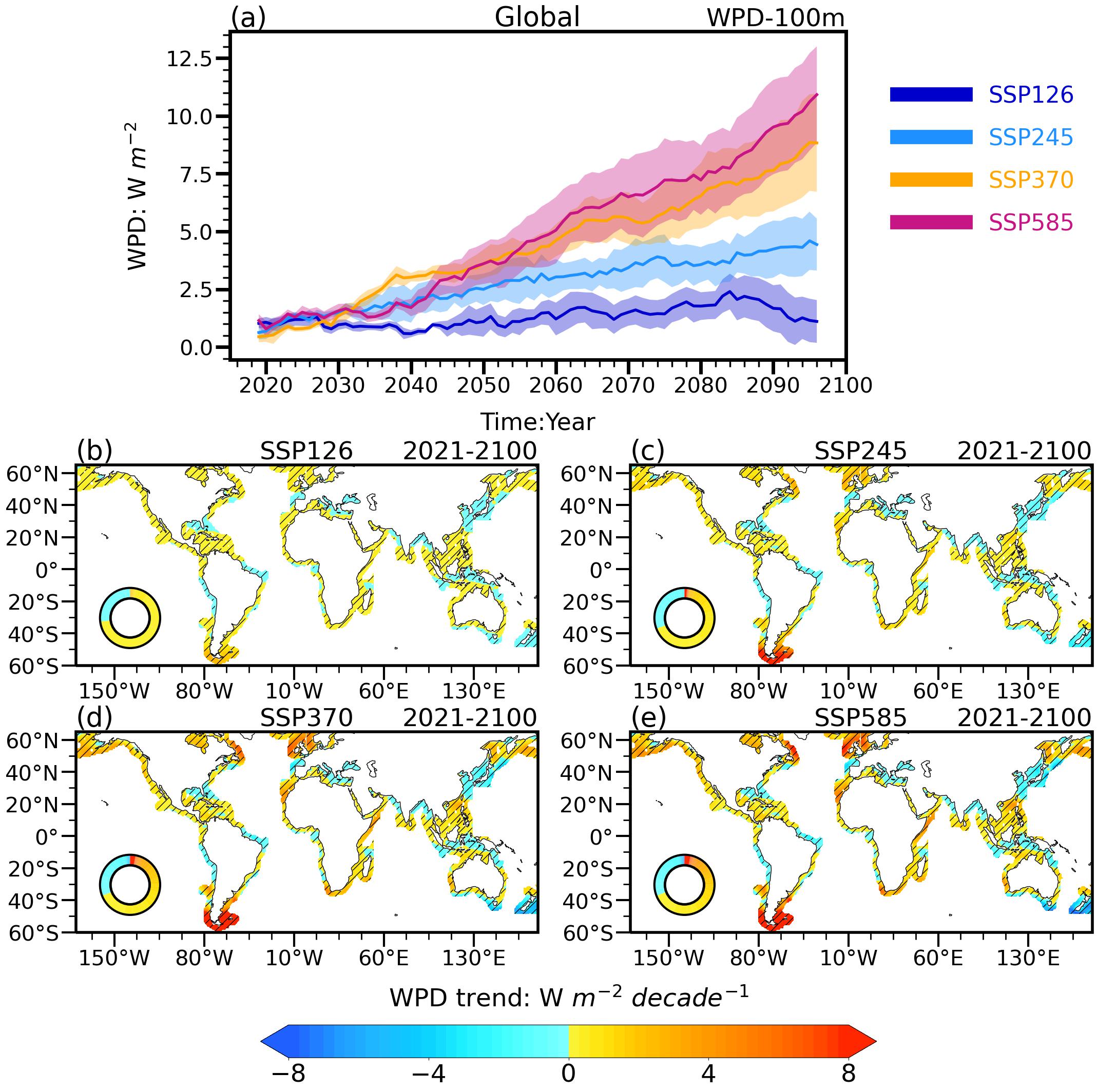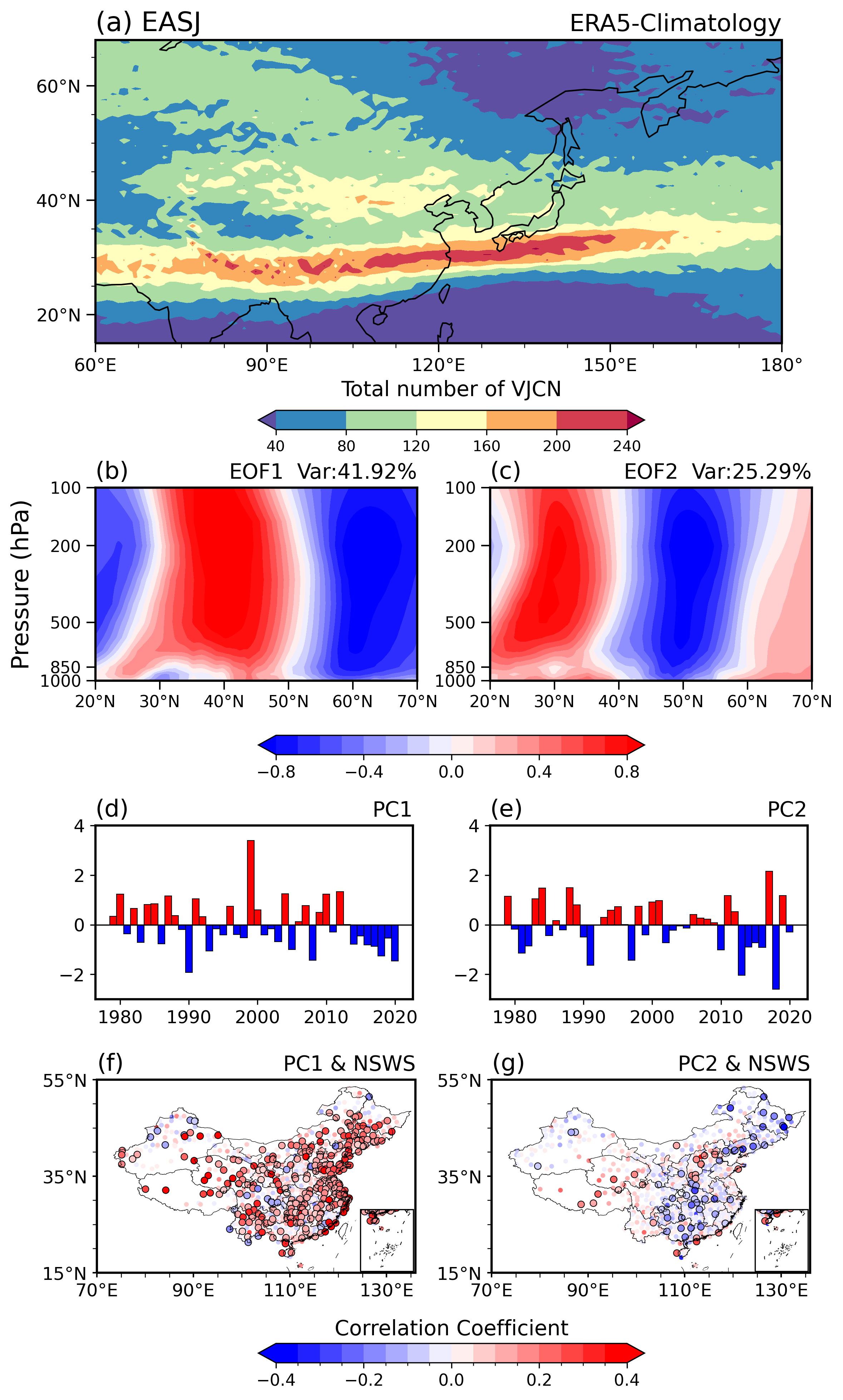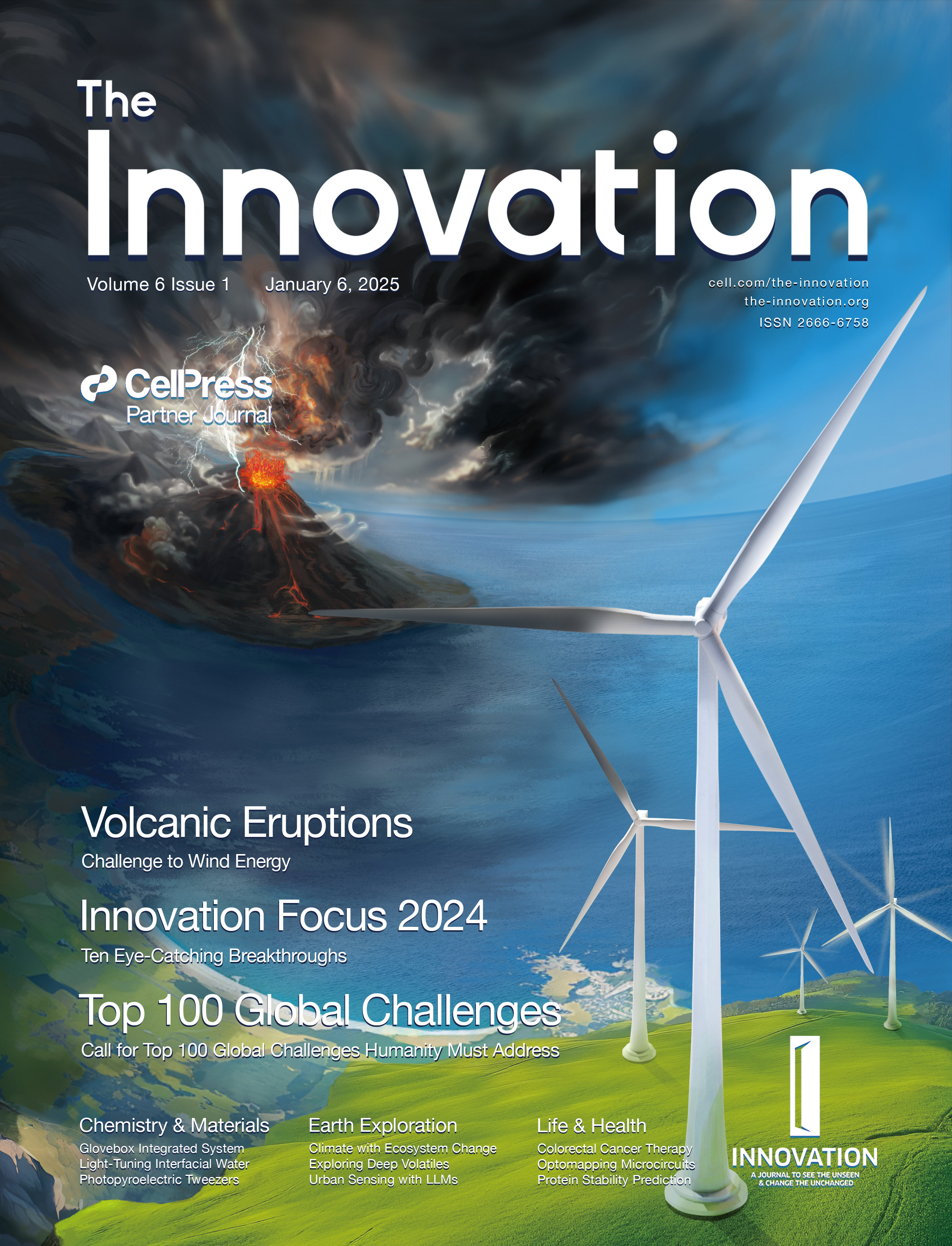Hej there, I’m Cheng
👨🏻💻 I’m a climatologist working on the near-surface wind speed change at the Regional Climate Group (RCG), University of Gothenburg.
🔬 My research focuses on near-surface wind speed changes, particularly understanding the driving factors behind shifts in wind speeds and extreme wind events. Using a combination of observation-based data, reanalysis datasets, and simulation models, I aim to provide insights that benefit the fields of wind energy and climate impact assessments. Our recent research has been reported by The Guardian, AGU News and the University of Gothenburg, and one study has been selected as the Journal Cover. I currently the youth editor of The Innovation, and lead three projects and contribute to two others in Sweden, and have supervised three BSc and two MSc students over the past five years.
📽️ Collaborations are always welcome, feel free to get in touch!
Featured research
Climate change impacts on wind power generation
 Less wind has a direct impact on the amount of electricity that can be generated by the many wind farms at globe. If the global stilling continues to happen will have a massive impact on alternative energy production. Turbines are somewhat inefficient, with limits on how much energy they can extract from the wind. According to some research, a 10 percent decline in wind speeds would actually result in “a 30 percent drop, and that would be catastrophic.”
Less wind has a direct impact on the amount of electricity that can be generated by the many wind farms at globe. If the global stilling continues to happen will have a massive impact on alternative energy production. Turbines are somewhat inefficient, with limits on how much energy they can extract from the wind. According to some research, a 10 percent decline in wind speeds would actually result in “a 30 percent drop, and that would be catastrophic.”
Warmer climates could mean more wind power
 Offshore wind farms, a rapidly expanding sector within wind energy, are playing a significant role in achieving global carbon neutrality, and this trend is to continue. Here, we utilize ERA5 reanalysis to correct offshore wind speed trends predicted by CMIP6 models. This approach led to enhanced projections for changes in offshore Wind Power Density (WPD) under four Shared Socioeconomic Pathways (SSPs) scenarios. Throughout the 21st century, global offshore WPD is projected to follow an upward trend across all SSP scenarios. Notably, Europe stands out with the most substantial increase in offshore WPD among regions with higher current installations, projected to reach up to 26% under 4°C global warming. Our study uncovers a notable increase of global offshore WPD in a warmer climate, which offers valuable insights for the strategic planning of future global wind energy. This research is featured in The Guardian, AGU News and the University of Gothenburg.
Offshore wind farms, a rapidly expanding sector within wind energy, are playing a significant role in achieving global carbon neutrality, and this trend is to continue. Here, we utilize ERA5 reanalysis to correct offshore wind speed trends predicted by CMIP6 models. This approach led to enhanced projections for changes in offshore Wind Power Density (WPD) under four Shared Socioeconomic Pathways (SSPs) scenarios. Throughout the 21st century, global offshore WPD is projected to follow an upward trend across all SSP scenarios. Notably, Europe stands out with the most substantial increase in offshore WPD among regions with higher current installations, projected to reach up to 26% under 4°C global warming. Our study uncovers a notable increase of global offshore WPD in a warmer climate, which offers valuable insights for the strategic planning of future global wind energy. This research is featured in The Guardian, AGU News and the University of Gothenburg.
Eastern Asian Subtropical Jet contributed to the hiatus of March surface wind over China
 A general decrease (stilling) that ceased around 2011, followed by a general significant increasing tendency (reversal) in all months but March over China. Indeed, March’s wind series after 2011 showed a pause (i.e., hiatus) from the 1979–2011 slowdown. This hiatus was mainly caused by the general wind reduction across northern China since 2011, which differs from the wind increase observed in other regions. The slowdown in March from 2011 to 2020 is related to the southward shift of East Asian subtropical jet streams, which are fast‐flowing, narrow, and meandering air currents in the upper atmosphere (a). Jet streams play an important role in shaping both upper and lower air circulation and influence surface wind by transporting high and low‐pressure systems.
A general decrease (stilling) that ceased around 2011, followed by a general significant increasing tendency (reversal) in all months but March over China. Indeed, March’s wind series after 2011 showed a pause (i.e., hiatus) from the 1979–2011 slowdown. This hiatus was mainly caused by the general wind reduction across northern China since 2011, which differs from the wind increase observed in other regions. The slowdown in March from 2011 to 2020 is related to the southward shift of East Asian subtropical jet streams, which are fast‐flowing, narrow, and meandering air currents in the upper atmosphere (a). Jet streams play an important role in shaping both upper and lower air circulation and influence surface wind by transporting high and low‐pressure systems.
Robust reduction in wind speed after volcanic eruptions
 Using simulations spanning the past millennium, we identify a consistent two-year global reduction in NSWS following ten major volcanic eruptions. This decrease, equivalent to two inter-annual standard deviations, is driven by volcanic aerosols weakening subtropical descending air and reducing downward momentum flux. The 1815 Tambora eruption, one of history’s most powerful events, caused a ~9.2% decline in global wind power density over the subsequent two years. Our findings address a critical knowledge gap, provide a theoretical basis for future empirical studies, and highlight potential risks of wind energy deficits caused by large-scale atmospheric aerosol injections from volcanic eruptions, nuclear conflicts, or geoengineering efforts. This research is featured in the Journal Cover, The Guardian.
Using simulations spanning the past millennium, we identify a consistent two-year global reduction in NSWS following ten major volcanic eruptions. This decrease, equivalent to two inter-annual standard deviations, is driven by volcanic aerosols weakening subtropical descending air and reducing downward momentum flux. The 1815 Tambora eruption, one of history’s most powerful events, caused a ~9.2% decline in global wind power density over the subsequent two years. Our findings address a critical knowledge gap, provide a theoretical basis for future empirical studies, and highlight potential risks of wind energy deficits caused by large-scale atmospheric aerosol injections from volcanic eruptions, nuclear conflicts, or geoengineering efforts. This research is featured in the Journal Cover, The Guardian.
Last modified: 2025-01-10
# Selected Experience ## 🤖 Open Source Contributions I have experience contributing to [Arena Bench](https://github.com/Arena-Rosnav) a large open-source project for robotic obstacle avoidance using Deep Reinforcement Learning. Moreover, I have published a [respective paper](https://sudo-boris.github.io/publication/2022-Arena-Bench) at the IROS conference and in the Robotics and Automation Letters (RA-L) journal. \ (🤫 Recently, I have submitted a second one.) ## 📜 Reimplementing and Reproducing Papers I have experience with independent research. I have implemented the Reward Constrained Policy Optimization paper into stable-baselines3 PPO and reproduced the original results by running and tracking experiments. To accompany this work, I have submitted a blog post to the **ICLR** Blogposts Track communicating the paper's theory and my results. Feel free to look at my specific [portfolio entry](https://sudo-boris.github.io/portfolio/RCPPO/). ## 👨🏻🔬 Professional Experience Additionally, I have professional experience working as an **Applied Machine Learning Student Researcher** at the Fraunhofer Heinrich Hertz Institute. \ There I work on dynamic traffic flow forecasting using Graph Neural Networks. ## 📚 Teaching and Community Contributions To further contribute to the Machine Learning community, I have a [YouTube](https://www.youtube.com/@borismeinardus) and [Medium](https://medium.com/@boris.meinardus) channel where I publish educational Machine Learning content.
